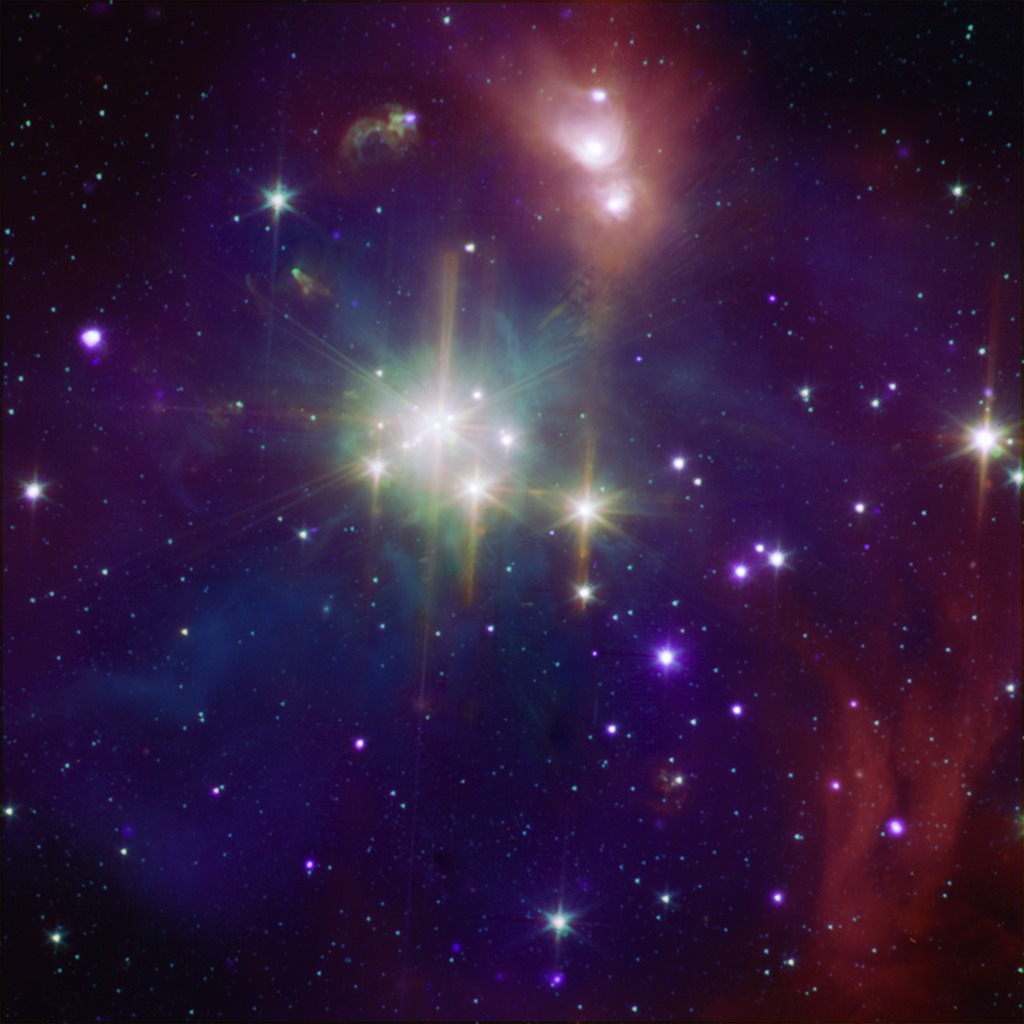
Credit: NASA/CXC/J. Forbrich (Harvard-Smithsonian CfA), NASA/JPL-Caltech L.Allen (Harvard-Smithsonian CfA) and the IRAC GTO Team
Observation • September 13th, 2007 • sig07-017
sig07-017
While perhaps not quite as well known as its star-formation cousin Orion, the Corona Australis region (containing, at its heart, the Coronet cluster) is one of the nearest and most active regions of ongoing star formation. At only about 420 light-years away, the Coronet is over three times closer than the Orion nebula is to Earth. The Coronet contains a loose cluster of a few dozen young stars with a wide range of masses and at various stages of evolution, giving astronomers an opportunity to observe embryonic stars simultaneously in several wavelengths.
This composite image shows the Coronet in X-rays from Chandra (purple) and infrared from Spitzer (orange, green, and cyan). The Spitzer image shows young stars plus diffuse emission from dust. Due to the host of young stars in different life stages in the Coronet, astronomers can use these data to pinpoint details of how the youngest stars evolve.
About the Object
- Name
- Coronet Cluster
- Type
- Star > Grouping > Cluster
- Star > Evolutionary Stage > Young Stellar Object
- Nebula > Type > Star Formation
- Nebula > Appearance > Emission
- Distance
- 424 Light Years
Color Mapping
| Band | Wavelength | Telescope |
| X-ray | 1.5 keV | Chandra ACIS:IRAC |
| Infrared | 3.6 µm | Spitzer IRAC |
| Infrared | 4.5 µm | Spitzer IRAC |
| Infrared | 8.0 µm | Spitzer |
Astrometrics
- Position (J2000)
- RA =19h 1m 47.6s
- Dec = -36° 58' 32.8"
- Field of View
- 16.9 x 16.9 arcminutes
- Orientation
- North is 0.2° right of vertical



